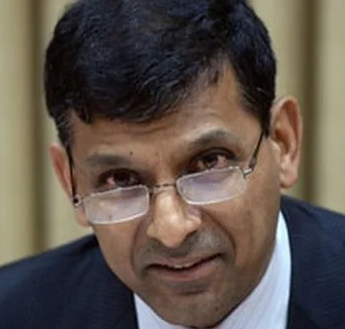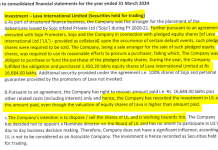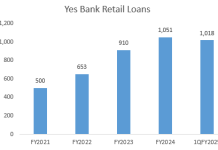Hemindra Hazari
The media has gone overboard on the government of India’s decision not to give Raghuram Rajan, the Reserve Bank of India (RBI) governor, a second term, and focused on how the government is unable to retain an internationally acclaimed economist. However, now that Rajan is going, we need to turn attention on what the RBI’s monetary policy should be in the post-Rajan period.
No doubt, Rajan made politically-loaded public comments on questions of tolerance; he compared the Indian economy to a one-eyed king in the land of the blind and he threw cold water on the Make in India campaign. All this displeased the ruling party and its parent organisation the Rashtriya Swayamsevak Sangh (RSS). But the underlying dispute lay elsewhere: the government wanted a reduction in interest rates, which was not forthcoming from the independent-minded governor.
After plotting Rajan’s removal, the government appears to have been ill-prepared for this decision, as they were unable to announce his replacement. Nor did they provide any indication to the market of what would be RBI’s post-Rajan monetary stance. It seems the government lacks a coherent alternative policy.
Importance of foreign investment
The support Rajan enjoyed from foreign investors was unprecedented in the history of the RBI. Indeed, it was this very support that made him the most powerful and independent governor in RBI’s history, and probably gave him the confidence to publicly air his dissenting views on tolerance, and the strategy and quality of India’s economic growth. Even when publicly admonished by union minister Nirmala Sitharaman, Rajan refused to apologise and instead defended his statement. Rajan, it seems, was confident that on account of the backing of foreign investors and their importance to the Indian economy, he could make uninhibited remarks, maintain an independent monetary policy and yet look forward to his second term as governor.
His decision to return to academia, no doubt occasioned by the government’s signals regarding giving him another term, was met with dismay by foreign investors and by the business media. Latha Venkatesh, the executive editor at CNBC TV-18 even dressed in black when moderating a show on REXIT (Rajan’s exit) the day following his decision. The first business day following Rajan’s decision saw an outflow of Rs 2,837 crore from foreign portfolio investors. The government’s decision to announce major foreign direct investment liberalisations on the same day reveals the importance of foreign investment in dictating economic policy in India.
Capital markets prefer governors of central banks to be technocrats, independent of democratically elected governments, owing their allegiance to, and defending the interests of, the markets. Such technocrats schooled in monetary economics with a single-minded focus on inflation are regarded as the most appropriate defenders of the country’s banking system, exchange rate, debt and equity markets. Foreign investors and markets are wary of central bank governors advocating expansionary fiscal and monetary policies on the belief that it leads to inflation and hence reduces the return on investments in host countries.
The Indian government is in a quandary. If it appoints a RBI governor who lowers interest rates, eases liquidity, relaxes bad debt norms for banks and provides relief to manufacturing and employment, it may run afoul of foreign investors, who may respond by pulling out their funds, resulting in a foreign exchange balance of payments crisis. If, on the other hand, the government bows to the demands of foreign capital and appoints a monetarist economist who continues with Rajan’s tight monetary policy with a single point focus on inflation, foreign investors would be pleased but the government, like the unlucky Rajan, may be denied a second term in office if economic output and employment stagnates.
Obsession with inflation at the cost of employment
In order that his legacy be continued in the RBI, post his return to the “realm of ideas”, Rajan gave an impassioned speech at the Tata Institute of Fundamental Research on the virtues of his tight monetary policy. Rajan defended his inflation stance by saying that the CPI threshold should be kept in the low single digits (2-5%) and not in the higher single digits (over 5 to 10%) as there exists a possibility of breaching the higher threshold and inflation has a tendency to feed on itself, spiraling it upwards. Arguing against sharply reducing interest rates as a means of stimulating the economy, he said that while stock market may shoot up for a few days if the RBI cuts rates by, say, one percentage point, if the economy is operating at near full capacity, supply shortages will result in rise in prices.
Furthermore, incorporating the expectations theory, a reduction in rates will send a signal that the central bank is not serious on inflation and this will result in embedding inflationary pressures such as for wages, which will again fuel inflation. He also took on his critics on four major issues; the importance of the consumer price index (CPI) over the wholesale price index (WPI), the effective real rate of interest on savings and investment, relevance of monetary policy when supply is a constraint and finally control over the fiscal deficit.
Monetarist economists argue for a single-point focus on inflation, claiming that if CPI is controlled (2-5% annually), it lays the foundation for future stable economic growth. Low inflation in their view results in positive real rates of interest for depositors and attractive, stable returns for foreign investors. These increases financial savings and foreign capital inflows, thereby fueling fixed asset investments and higher economic growth. Even if the anti-inflation strategy results in socio-economic pain in the form of demand-suppressing measures, lower employment and lower GDP growth, advocates defend it as the inevitable short pain which is necessary (sometimes to pay for the earlier sins of profligacy) to achieve sustained future high economic growth.
One of the problems with such a strategy is that it does not differentiate between demand-pull inflation (as a result of excessive demand and high capacity utilisation) and cost-push inflation (rise in input costs); while the former can be controlled through high interest rates the latter responds indirectly to high interest rates. In India, during the tenure of Rajan, the CPI has been high on account of cost-push inflation while WPI has been negative to marginally positive on account of a demand slowdown. While Rajan acknowledges that the RBI cannot control food demand and supply, the RBI in the CPI “can control other discretionary items in the consumption basket …[and] prevent sustained food inflation from becoming generalised inflation through higher wage increases.” Thus even during an economic slowdown, when industrial capacity is under-utilised, corporate sales growth is anaemic, employment growth is marginal, and one can expect downward pressure on wages, the RBI has kept real interest rates (interest rates minus inflation) high. This would suppress demand and squeeze wages, which would result in lower consumption, and this in turn would bring down inflation.
Such a strategy has a profound negative impact on the aam admi, a constituent Rajan professes to protect. The average worker is already under pressure on account of two consecutive years of drought, flat industrial production, and food prices are rising. Now the central bank wants to further bring down his or her consumption, in the name of preventing a wage-price spiral. Rajan has argued that this is a necessary short-term pain, but the pain has gone on for nearly three years now, and there is no exact date for its end. No democratically elected government can have its central bank follow such a harmful strategy, impacting a vast number of its citizens, and expect to retain office.
RBI-government contractionary tango
However, the responsibility cannot be laid exclusively at the RBI’s door. The government too is set on a deficit-cutting mode. The effort to cut the fiscal deficit even during a period of flat growth is equally mistaken, as there exists slack capacity in the economy. The global economy too could trigger a growth revival, but today global growth is anaemic and is in fact contributing to the slowdown in India. With the domestic private sector still unwilling to accept risk, an expansion of government expenditure is sorely needed.
An increase in overall government expenditure would result in more orders and better utilisation of capacity. Barring specific bottlenecks, such an increase in demand would not cause the economy to suddenly over-heat. Yet, despite the present slowdown, monetarists like Rajan are arguing for pro-cyclical policies from the government (in the form of fiscal consolidation) and from the RBI (in the form of tight monetary policies) on the belief that a relaxation will result in future inflation. And if the government and RBI, the only two institutions which can undertake counter cyclical measures instead adopt pro-cyclical measures the slowdown can only continue and get worse.
The situation therefore demands an expansionary fiscal and monetary policy to revive growth. However, foreign investors may exercise a veto on such strategies by pulling out their investments, resulting in a balance of payments crisis. In the present environment, it appears foreign investors may tolerate central banks adopting a somewhat more expansionary monetary policy, but they are dead set against an expansionary fiscal policy.
Alternative strategy?
After launching an ugly campaign for Rajan’s removal, the government appeared ill-prepared for Rajan’s decision and the onslaught of negative publicity which accompanied it. The government neither had an immediate alternative replacement for Rajan nor did it articulate an alternative monetary policy apart from arguing for a reduction in interest rates.
The Indian government needs to appoint a RBI governor who will reverse the tight policies of Rajan, lower interest rates significantly enhance credit to employment intensive sectors like agriculture (specifically marginal cultivators/ labourers), micro and small and medium enterprises and textiles. The government needs to clearly articulate this strategy to the market and show its determination in implementing such a strategy even in the face of opposition from foreign investors. If the government continues to waver in its policy stance, foreign capital and the market will lose confidence.
Rajan articulated his tight monetary policy forcefully to the markets and made it clear that he would be unaffected by short-term movements in the market and in the economy. The government needs to adopt Rajan’s forcefulness in articulation and determination while reversing his strategy, if it wants to provide some relief to the Indian economy and enjoy a second term in office.














